The best foreign armor-piercing complexes
Today's realities are such that, thanks to the rapid growth of the defense industry of China, vigorous actions of the West, many states refuse to cooperate with Russia, including for purely political reasons. Therefore, the promotion of Russian weapons and armored vehicles is not going as we would like. It is precisely because of the possible potential buyers the main emphasis is on the armament of Western production. Therefore, we will further give examples of the main competitors of domestic ATGMs, which we mentioned in previous material.
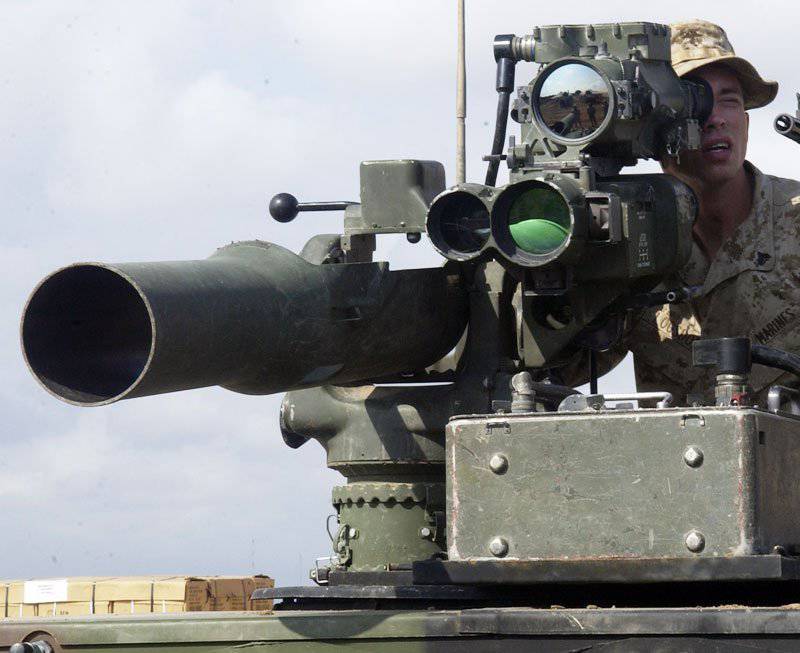
Thus, the most massive western development is the BGM-71 TOW, a universal ATGM, which can be mounted either on a tracked or wheeled vehicle chassis or installed in a stationary position. The complex was put into service in 1970 year. It uses semi-automatic, command guidance of the rocket, which is carried out by the operator. The BGM-71 TOW is one of the most common anti-tank systems in the world. In addition to American troops, is in service with a number of European armies and Israel.
This complex has a large number of modifications: BGM-71B, BGM-71C Improved TOW, BGM-71D TOW-2, BGM-71E TOW-2A, BGM-71F TOW-2B, TOW-2N, Aphsh, NGXXXX, NGXX, BGM-71F TOW, TOW-71B Aero, TOW-2B Aero, MAPATS.
To a certain extent, the American complex is similar to domestic ones (semi-automatic command control), but it costs much more expensive not only in operation, but also directly in production. The average cost of the BGM-71 TOW reaches 60 thousands of dollars, which is significant even for non-poor countries.
It is known that these American complexes were used in the Vietnam War 1957-1975, the Iran-Iraq military conflict 1980-1988, the Lebanese war 1982, during the Gulf War in 1990-1991, as well as during the UN peacekeeping operation in Somalia in 1992-1995, in the Iraq war 2003-2010.
In total, more than a thousand 700 missiles were produced, and over the 1999-2007 period alone, over a thousand anti-tank guided missiles were exported.
Also currently in the US Army, one of the most common armor-piercing systems is the FGM-148 Javelin ATGM, which was put into service in 1996. This complex is designed to destroy not only armored vehicles, but also protected objects, in particular, bunkers and pillboxes, as well as low-flying low-speed targets (drones, helicopters). This is the first production complex of the third generation with an infrared guidance system that provides work on the principle of "fire and forget".
The caliber of the missile complex is 127 mm, its length reaches almost 1,1 m, and its mass is 11,8 kg. The total weight of the complex is 22,25 kg. The complex can shoot at a distance from 50 m to 2,5 km with a maximum speed of 290 rocket meters per second. The rocket provides armor penetration in 70, see
Initially, the complex was developed to replace the M47 Dragon anti-tank missiles, which were in service with the American army before 1975. It is known that the total cost of the program for the development and production of the complex was 5 billion dollars, and the cost of one unit is close to 100 thousands of dollars, which makes FGM-148 Javelin the most expensive anti-tank systems for all history the existence of such weapons.
The FGM-148 Javelin missile is made according to the traditional aerodynamic scheme with expanding wings and is equipped with an infrared homing head and a tandem warhead. It can attack the target either directly or from above, which makes it possible to hit all modern species tanks. And due to the “soft descent” system, shooting from an enclosed space is possible.
Targeting ammunition is possible in difficult meteorological conditions, at any time of the day and in conditions of excessive smoke. At the same time, it is impossible to counteract a rocket using simple means of optical-electronic suppression, since the guidance system does not receive a modulated signal.
Due to the relatively small weight of the complex can be transferred over relatively long distances, but at the same time, its dimensions do not allow to move in the forest or shrub. After the complex is put into operation, the shot must be fired for a few minutes, as the product becomes consumed regardless of whether the shot was fired.
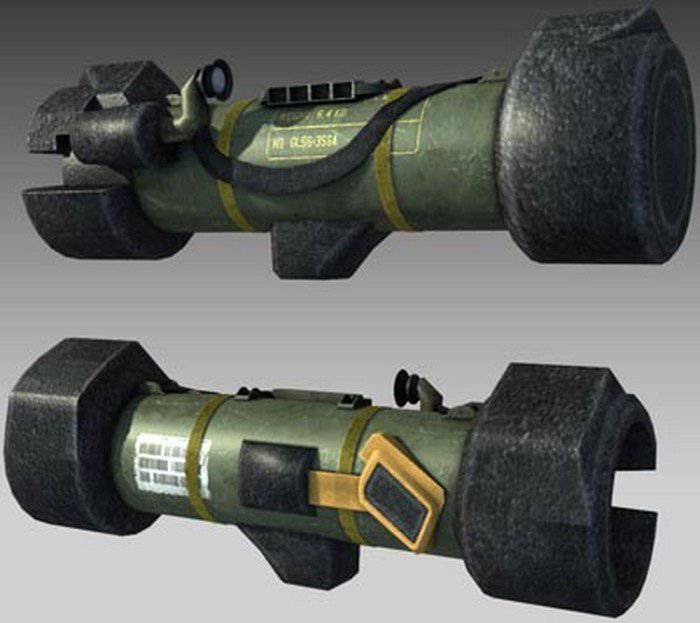
Another American-made anti-tank missile system - FGM-172 SRAW / Predator. It is designed to destroy battle tanks, lightly armored vehicles, as well as long-term defensive structures at a distance of up to 600 m.
The caliber of the rocket reaches 141,5 mm. The total weight of the complex is 9 kg, while the mass of the rocket reaches just over 3 kg.
This complex is a relatively inexpensive and lightweight disposable weapon with a simplified guidance system. The launch of the rocket is carried out by one person from the position “from the shoulder”.
Like the FGM-148 Javelin, it is equipped with a “soft” descent with a low level of smoke generation, infrared radiation and sound, which allows it to be used from closed rooms.
The FGM-172 SRAW consists of a transport and launch container, a rocket, an optical sight, and a launch mechanism.
It was developed to replace the M-136 and M-72 LAW anti-tank grenade launchers, which are in service with the American marines. It was assumed that this complex will complement FGM-148 Javelin.
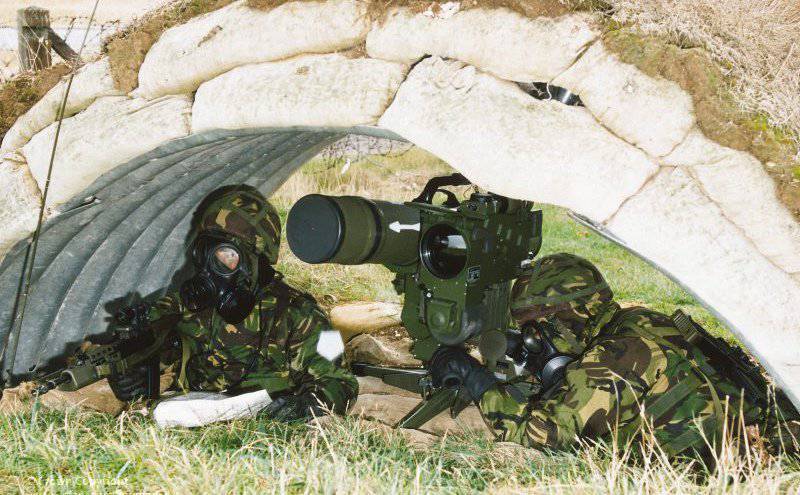
In Europe, in the middle of the 70 of the last century, the United Kingdom, France and the Federal Republic of Germany began to work together to create a third-generation anti-tank missile system with an infrared guidance system. The result of their work was the emergence of a portable anti-tank missile complex TRIGAT MR, the purpose of which was to destroy armored targets at a distance of up to 2,2 km.
The launcher is equipped with a thermal sight, trigger, power source. The rocket is controlled by coded laser beam. The only action that the launcher operator performs during the shot is to hold the crosshair on the target. The operator can also change the target for the rocket during its flight.
The weight of the launcher of this complex is 17 kg, the mass of the missile is 15 kg with a length of 1045 cm and a diameter of 15,2 cm. The weight of the warhead reaches 5 kg. The range of the projectile ranges from 200 m to 2,4 km, and at the maximum distance it flies over 12 s.
The installation can be applied in the temperature range from -46 to + 63 degrees Celsius.
Later, the development of the complex in a helicopter version with a long-range missile (up to 5 km.) LR-TRIGAT was continued only by the Germans, ordering rockets of such power from the European concern MBDA 700 of such power to arm Tiger helicopters, all the rest of the customers of these machines refused the missiles.
It should also be noted that the concern MBDA continues to work on the production of a very popular second-generation MILAN anti-tank systems. This is a joint French-German anti-tank portable missile system, which was put into service in the 1972 year, gaining wide popularity in the world.
The complex includes a launcher (consists of an electronic unit, a sight, a power source and a control panel) and a launch container with a rocket. The total weight of the complex is 37,2 kg, the mass of the rocket reaches 6,73 kg, its length is 769 mm, and the wingspan is 26, see. The rocket launches at a speed of 75 meters per second, accelerating to the maximum at 200 meters per second. Flight range ranges from 25 m to 3 km, with armor penetration reaching 80 cm.
The complex has a number of modifications: Milan 2, Milan 2T, Milan 3, Milan ER.
MILAN used the forces of the anti-Iraqi coalition in the course of Operation Desert Storm, but the missiles of the complex were unable to penetrate the armor of the Iraqi T-55 tanks.
Currently, the complex is in service with 44 countries of the world, including the UK, Germany, France, Italy, Spain, Armenia, Belgium, Syria, Libya and India.
The French army today uses lightweight, portable Eryx anti-tank systems. This is a short-range complex, the main purpose of which is reduced to the destruction of tanks, fortifications and engineering structures, surface targets. Rocket launch is possible not only in the tripod machine, but also from the shoulder position. The complex is equipped with a semi-automatic command guidance system.
The total weight of the complex with a tripod reaches 15,8 kg, the mass of the rocket is 10,2 kg. The rocket length is 89,1 cm., Diameter - 13,6 cm. The rocket starts at a speed of 18 meters per second and reaches a maximum speed equal to 245 meters per second. The firing range ranges from 50 to 600 m, armor-piercing - 90 cm.
Currently, the complex is in service with the armies of Brazil, Canada, Norway, Turkey, Malaysia, France and Chad.
Another light short-range anti-tank missile system is made by the Swedish company Saab Bofors Dynamics. This is the RB-57 NLAW with inertial guidance system. This is a new generation complex, which is designed to destroy at a short range tanks and armored vehicles, equipped with dynamic protection. For its service only one person is needed. The total weight of the complex is 12 kg, the range of the missile ranges from 20 to 600 m, and the complex from marching to combat position is given in 5 seconds.
Defeat can be carried out not only frontally, but also from above. Possible start-up from enclosed spaces.
In Sweden, another portable anti-tank missile system is being produced, which at one time was the first anti-tank system capable of hitting targets from above. This is RBS-56 BILL. Its main purpose is reduced to the defeat of battle tanks, infantry armored vehicles, self-propelled artillery installations and other armored vehicles, as well as fortifications at a distance from 150 m to 2,2 km.
The striking properties of the rocket were improved by increasing the weight of the shaped charge and its diameter, as well as due to an unusual design and circuit design. The direction of the cumulative jet of the warhead is deflected from the longitudinal axis of the rocket by 30 degrees, and the flight path of the rocket passes above the guidance line to 1 m, which makes it possible to avoid encountering obstacles on the ground and hit the target from above.
The complex consists of a launcher on a tripod, height adjustable, a rocket in the launch canister, a sight. For his service, you need three people - the commander, operator and loader. 10-15 with. Perhaps firing from the position of "standing", "lying", "sitting", "from the knee."
A worthy competition to American manufacturers of portable and portable anti-tank missile systems are Israeli specialists. The most successful portable missile system is the Spike family. These are multifunctional anti-tank missile systems that are designed to destroy tanks, fortifications and engineering structures, as well as surface targets.
The complexes of this series have a firing range from 400 m to 8 km (Spike-ER), the weight of the missile is 9 kg, diameter - 17, see. The warhead is a tandem cumulative, weighs 3 kg. The rocket can reach speeds of the order of 130-180 meters per second.
The Spike complex has a number of modifications: Mini-Spike, Spike-SR, Spike-MR, Spike-LR, Spike-ER. Separately, it is necessary to single out the Spike NLOS variant, which uses an anti-electronic guided anti-tank missile with a range of up to 25 km. The weight of the complex is 71 kg.
All variants of the Spike complex have an infrared guidance system, which in some models is complemented by a control system via fiber optic cable. Due to this, in its technical characteristics, the Israeli complex is largely ahead of the American Javelin.
Currently, the complex is in service with many countries, in particular, France, Germany, Israel, Azerbaijan, Colombia, Chile, Italy, the Netherlands, Poland, Peru, Singapore, Slovenia, Spain, Ecuador, Finland, Romania.
Another Israeli anti-tank missile system, which is in service with the armed forces of Israel, and is also being exported - MAPATS, which was developed on the basis of the American TOW complex.
This complex was developed at the beginning of the 80-s. The developers faced the task of creating an anti-tank missile system for the Israeli army while aiming at a laser beam in order to expand the capabilities of the anti-tank missile system, which were guided by wire.
The weight of the rocket in the container is 29 kg, the starting weight of the charge is 18,5 kg, the mass of the warhead reaches 3,6 kg. The rocket has a length of 145, see. The total weight of the complex is equal to 66 kg. The rocket can fly a distance of 5 km with a maximum speed of 315 meters per second. At the same time armor penetration is 80 cm.
Its production of ATGM is in China. True, by and large, many Chinese complexes are copies of Soviet technology. Thus, the main anti-tank missile system in the Chinese army remains a modernized copy of the Soviet “Malyutka” complex. This is a HJ-73 equipped with a semi-automatic guidance system. This complex belongs to the first generation of ATGM, which were put into service in the Chinese army in 1979 year. It is used as a portable complex, and is also installed on infantry fighting vehicles, light car chassis.
For several decades, HJ-73 has been repeatedly upgraded in order to increase combat effectiveness and armor-piercing. The complex includes a controlled solid-fuel rocket, a launcher, and control equipment.
There are the following modifications of the complex: HJ-73B, HJ-73C. However, despite the modernization, in general, HJ-73 retained the drawbacks characteristic of its prototype: a low level of combat readiness, a low speed of a missile.
The rocket can cover the distance from 500 m to 3 km at a speed of 120 meters per second. The weight of the rocket reaches 11,3 kg, length - 86,8 cm, diameter - 12 cm. The armor resistance with such parameters is 50 cm. The weight of the launcher is 32 kg. To translate from marching to martial law, you need to spend almost 2 minutes.
In place of the HJ-73, the complex of the second generation HJ-8 was developed, which is a copy of the American TOW. The development of the complex began in the 1970 year, and it was only after 14 years that it passed the tests and was delivered to the troops. In the Chinese army, it is used as a portable complex, and it is also placed on infantry fighting vehicles, helicopters and light car chassis.
The complex includes a controlled solid-fuel rocket, a launcher, a telescopic sight, an infrared radiation receiver, as well as a calculating device and auxiliary equipment for maintaining the control system and testing the rocket’s health.
HJ-8 was repeatedly upgraded to improve the tactical and technical characteristics and, consequently, increase the accuracy and armor-piercing. Thus, the variants HJ-8A, HJ-8C, HJ-8E. Separately, it is necessary to note the latest modification of the complex - HJ-8L, which has the highest parameters of combat effectiveness and armor-piercing to 1. The new complex is equipped with a lightweight launcher with a periscope sight.
The complex in various modifications was exported to the United Arab Emirates, Pakistan, Thailand and the countries of the African continent.
In parallel with the modernization of the Chinese complex HJ-8 in Pakistan, its counterpart (in fact, a copy) of Baktar Shikan was improved. Some changes were made to it in comparison with the original: a thermal sight was installed, the equipment for testing the performance of the complex was improved, its weight was reduced, and the warhead — a tandem cumulative one.
The maximum range of the missile is 3 km. Baktar Shikan is equipped with control equipment that allows you to automatically accompany the rocket along the line of sight of the target. For carrying the complex is disassembled into 4 parts (sighting unit - 12,5 kg, control unit -24 kg, launcher - 23 kg, rocket and container).
The complex can be placed on an off-road automobile chassis, it can be transported using helicopters and transport airplanes.
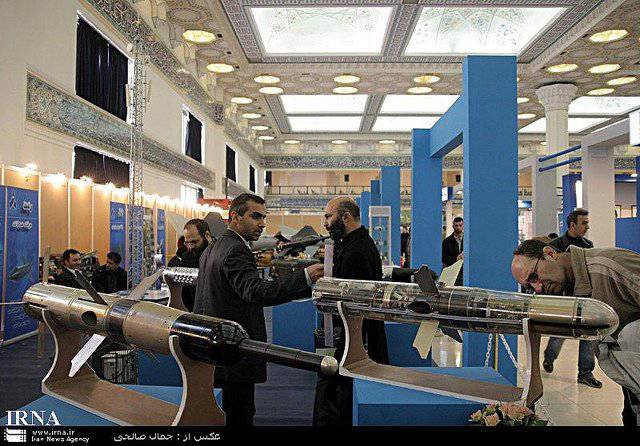
The American TOW complexes are also copied very successfully in Iran. This is a series of Toophan (Toophan-1 and Toophan-2) series with wire and laser controls, cumulative and tandem-cumulative warheads. The diameter of the missile complexes is 15,2 cm, length - 1,16 m. The weight of the projectile reaches 20 kg. The rocket is able to cover the distance to 3,5 km by day and 2,5 km at night at speeds up to 310 meters per second. In this case, its armor-piercing is 55-76, see.
A copy of another American Dragon (Saege) anti-tank missile system was made in Iran. M47 Dragon \ Saeghe was purchased in America in 1970 and used during the Iran-Iraq war. The complex is equipped with a semi-automatic missile control system, a cumulative warhead. The rocket can overcome the distance from 65 m to 1 km, while its armor-piercing is 50, see.
The creation of the Iranian version of the complex is an attempt to create a light portable anti-tank system, for which maintenance only one operator is needed, and which can be brought into combat as quickly as possible. At the same time, the missile complex has a small range and difficulties in controlling the projectile after launch. That is why currently this ATGM is in service with only certain Iranian special forces.
Iran makes copies of the Soviet “Malyutka” complex - Raad anti-tank systems (with a manual missile control system, a cumulative warhead, 40 cm armor-piercing, a firing range from 400 m to 3 km). In addition, there is the Iranian version of the Russian Konkurs-M ATGM - Tosan. At the moment, this particular complex is the most common anti-tank missile system, along with the American TOW and Iranian Toophan.
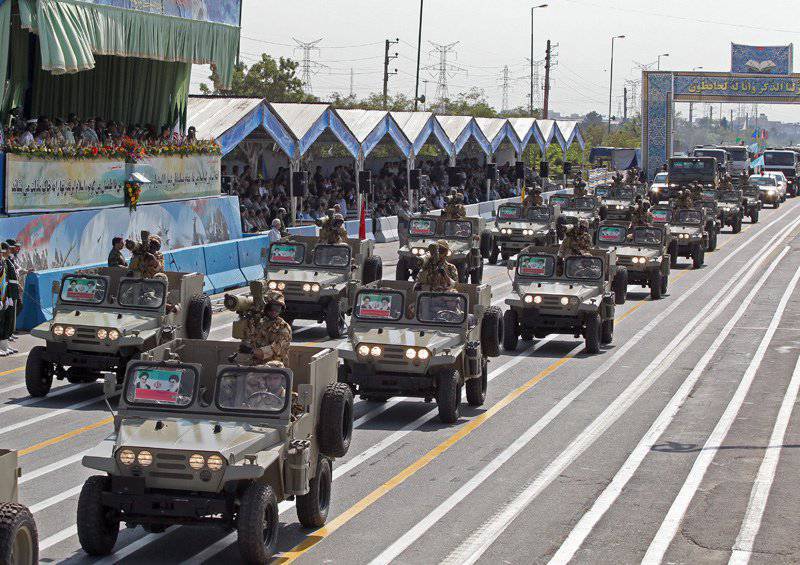
Tosan is equipped with a semi-automatic missile control system, the warhead is tandem-cumulative, its weight is 3,2 kg. The caliber of the rocket is 135 mm. Rocket armor penetration according to various data is 67-80, see. The rocket can cover distances from 70 m to 4 km in the daytime and to 2,5 km at night and using a thermal sight.
There are theoretically powerful ATGMs in India. This is a third-generation anti-tank missile system with an infrared guidance system Nag. It was created in 1990 year to deal with existing and promising tanks and armored vehicles. Able to operate at a distance of 6 km. The launcher has an aiming system, hydraulic guidance drives. The complex is located on the chassis of the Russian BIP-1 and is equipped with a tandem-cumulative warhead, active radar or thermal imaging head. It is possible to place additional missiles inside the armored corps.
Thus, it is quite obvious that there are enough arms and military equipment manufacturers in the world, and if you don’t want to or cannot work with Russia, you can buy the same ATGM in America, in Europe or in China, Iran, and so on. d.
Materials used:
http://vpk-news.ru/articles/13974
http://www.dogswar.ru/artilleriia/raketnoe-oryjie/1203-protivotankovyi-rake.html
http://calibr.ucoz.ru/publ/granatomety/ssha/granatomet_quot_fgm_172_sraw_quot/113-1-0-1158
http://rbase.new-factoria.ru/missile/wobb/milan2/milan2.shtml
http://rbase.new-factoria.ru/missile/wobb/eryx/eryx.shtml
http://eizvestia.com/armiya/full/441-protivotankovyj-raketnyj-kompleks-spike-izrail
https://ru.wikipedia.org/wiki/HJ-8
https://ru.wikipedia.org/wiki/Toophan_(%D0%9F%D0%A2%D0%A3%D0%A0)
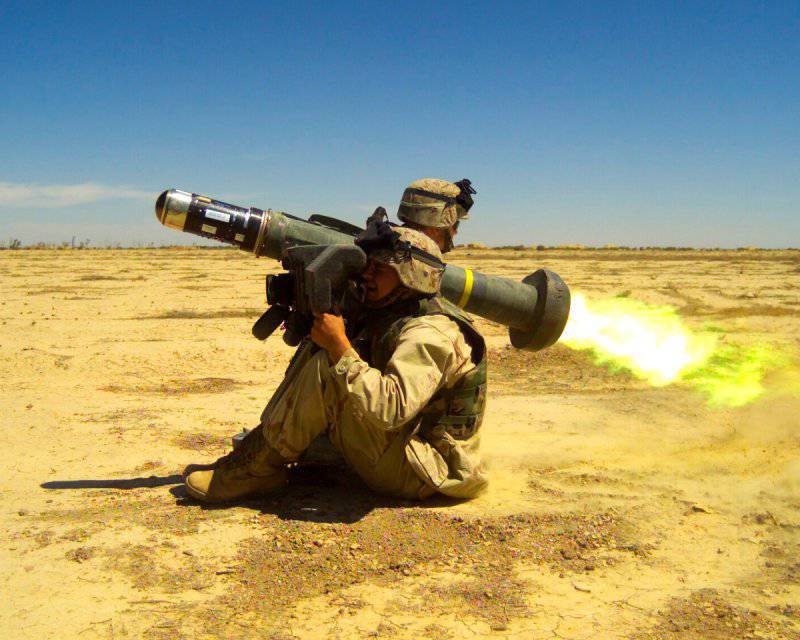
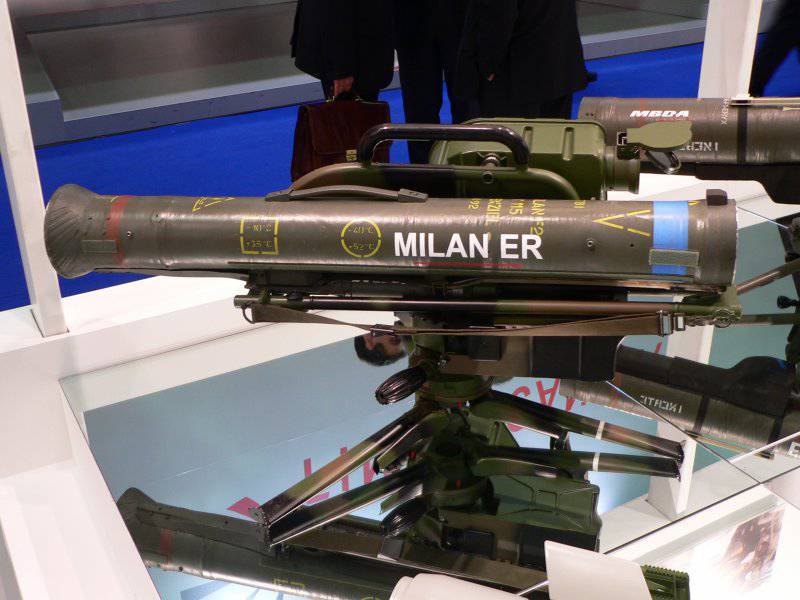
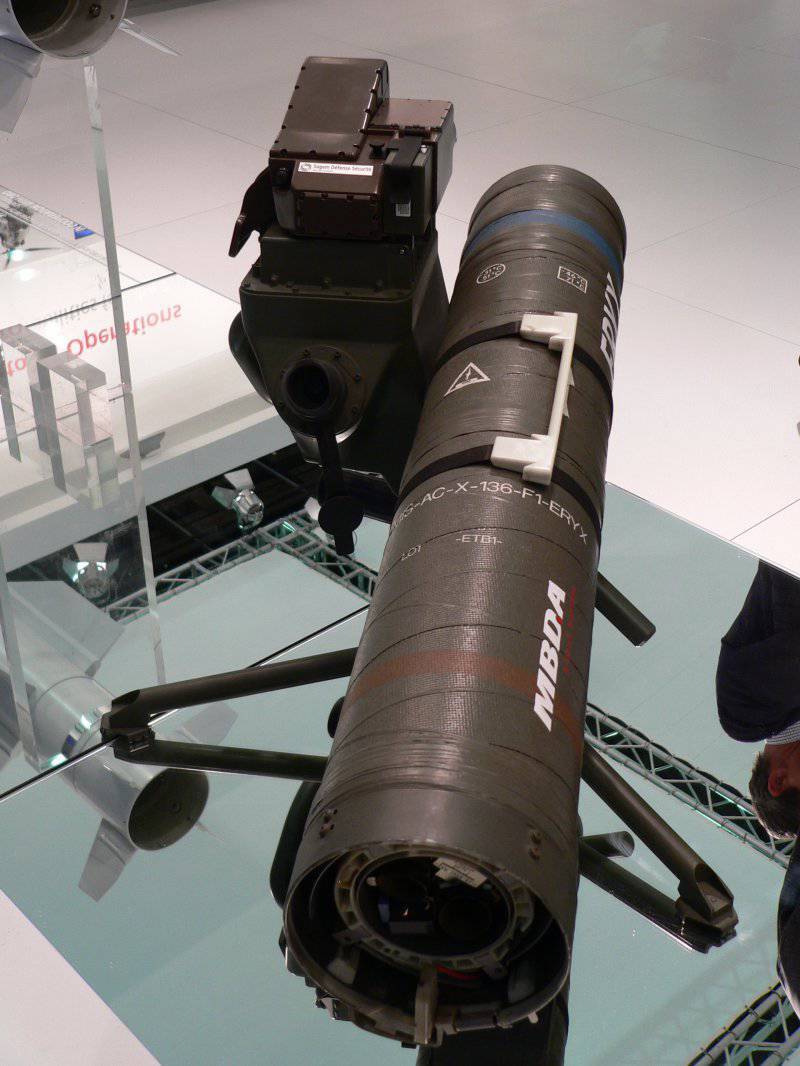
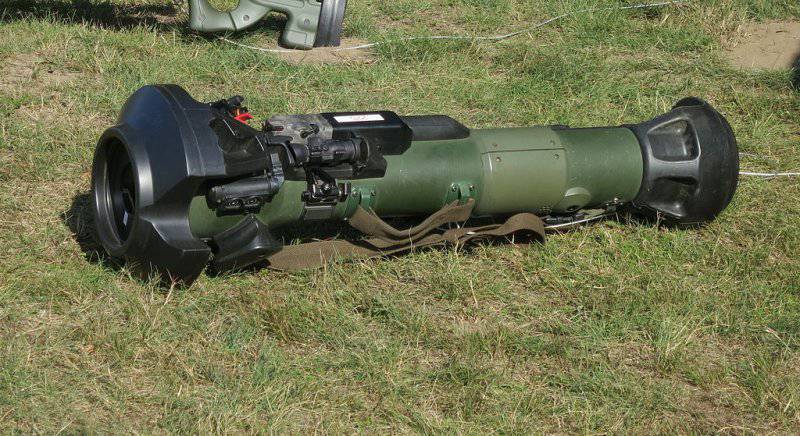
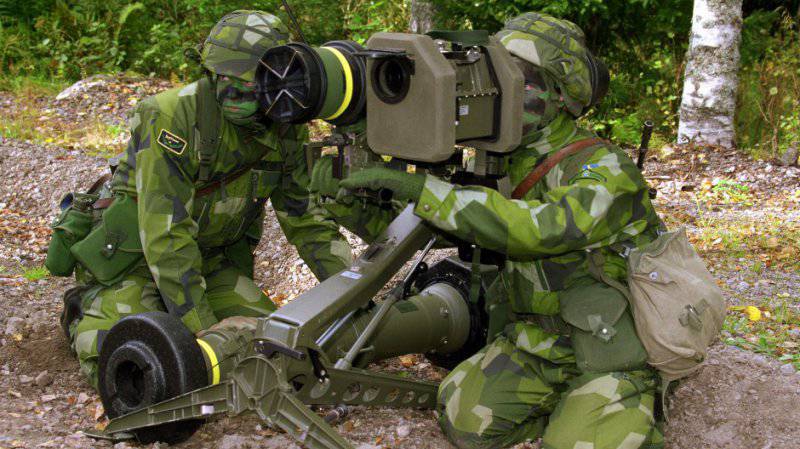
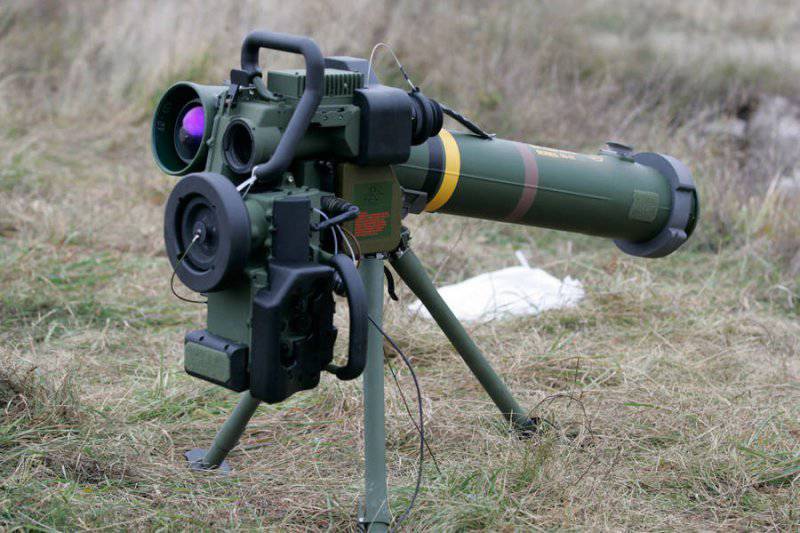
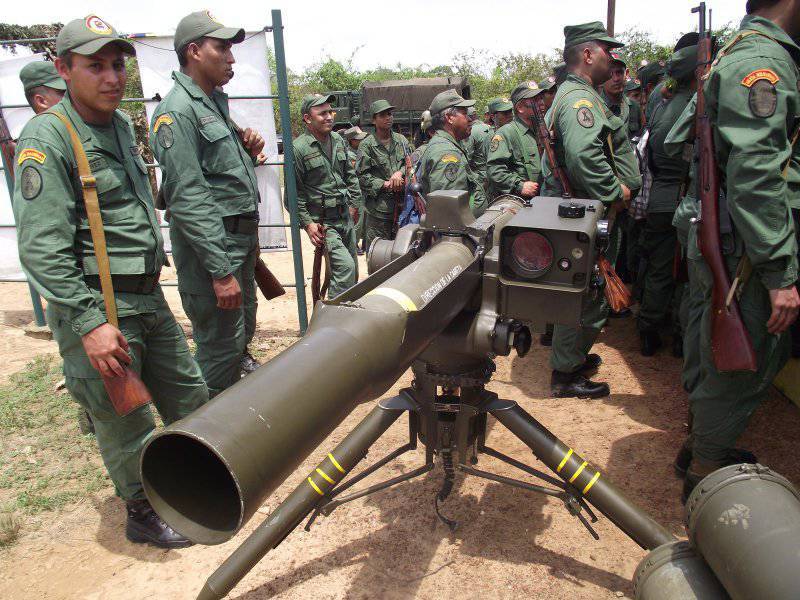
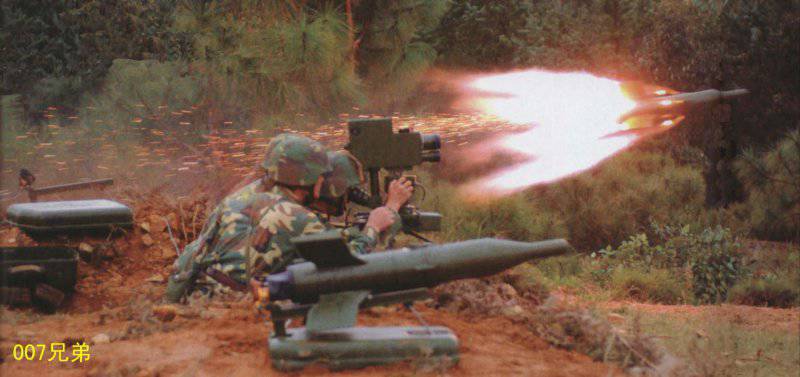
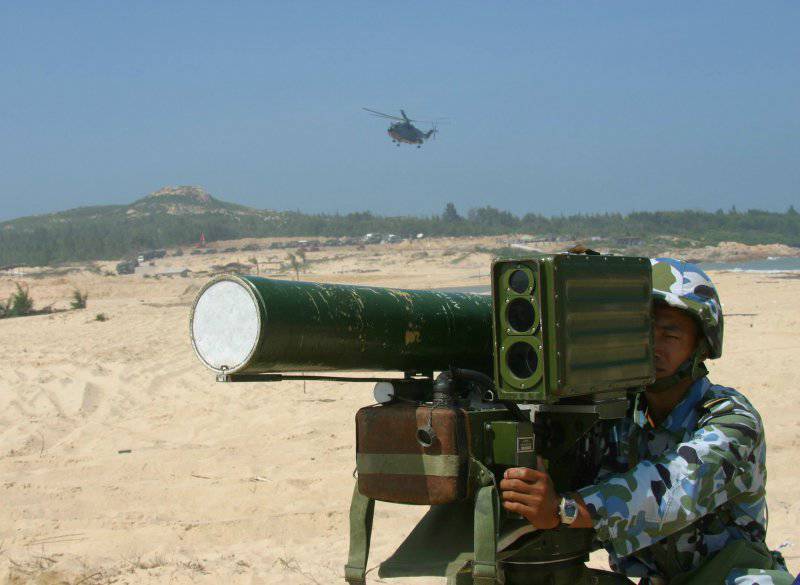
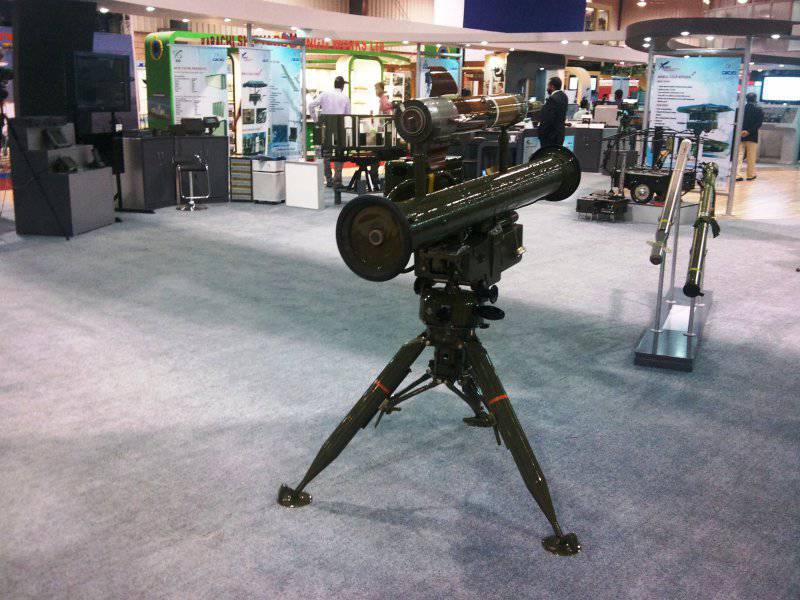
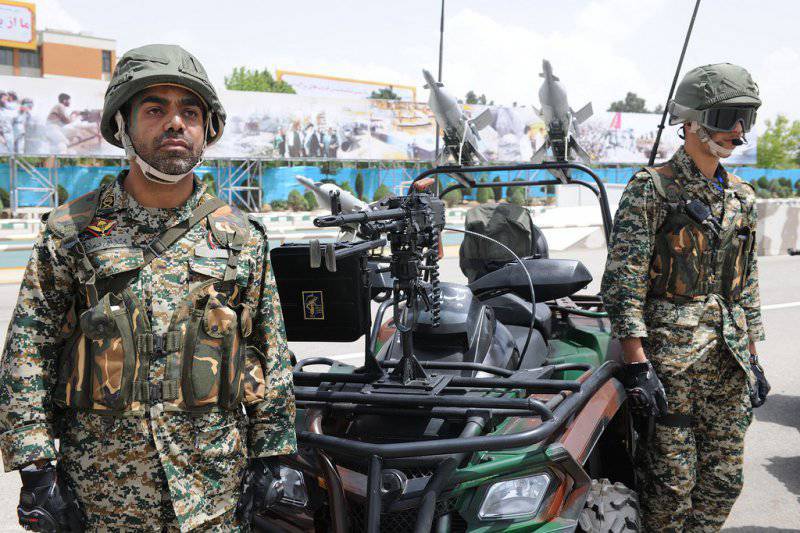
Information